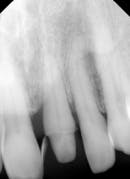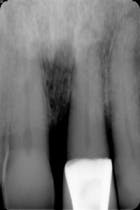Three things a matrix system must do to be successful
by Lee Ann Brady, DMD
For more on this topic, go to www.dentaleconomics.com and search using the following key words: matrix system, pre-wedging, matrix band, gingival margin, Dr. Lee Ann Brady.
There is only one thing that I miss about placing Class II and Class III amalgam restorations. I never worried about my matrix system. If amalgam expressed out beyond the preparation margins when I condensed it into the interproximal box, I had carving instruments that could easily take care of that. So the seal of the matrix against the tooth was not critical.
Amalgam was easy to condense, and I could create just enough force not to stress over the presence of a contact once the band was removed. As the popularity of posterior composites has increased, the conversations and frustrations about matrix systems have increased as well.
Unlike amalgam, the difficulty of condensing composite presents us with the challenge of recreating a tight interproximal contact.
Maybe more importantly,— trimming composite that has been extruded beyond the preparation margin around an interproximal box is difficult, frustrating, and unpredictable.
So, in a quest to minimize the amount of trimming we need to do with high-speed instrumentation after the composite is cured, we need a better matrix.
I was part of this quest until a few years ago. While researching matrix systems for a presentation, I came across a list of criteria that define a successful matrix. This powerfully shifted my perspective.
A matrix system must do the following three things:
- Recreate the natural tooth shape and interproximal contact
- Seal the proximal and gingival walls of the prep
- Overcome the thickness of the band
Any system that meets these three criteria will be successful. The learning for me has been that meeting these criteria predictably is about how we use the tools at our disposal — such as bands, retainers, wedges, and rings — and not about finding a magic system. Even before I prepare the tooth, I can begin to meet the third criteria through the use of a technique called pre-wedging.
Pre-wedging
Pre-wedging is an old concept, which I readopted in my practice about five years ago. I place a tightOnce I am finished with the prep and ready to place a matrix, I remove this first wedge. Often I find that it is very loose in the space between the teeth, and I will need to move to a larger wedge once my matrix is in place. When removing the wedge, the tissue may bleed. This is managed with the matrix and another wedge prior to placement of the restoration.
Recreating the natural tooth shape and sealing the walls begins with the matrix. On the market today are both plastic and metal matrix bands. They are available in a variety of thicknesses and delivery systems that include sectional matrix bands, circumferential systems, and bands that require a holder.
The band is simply a barrier between the tooth I am restoring and the adjacent tooth. So the thinner, the better. The band prevents me from bonding the teeth together and creates the appropriate shape. Sealing this band against the preparation walls is the job of the wedge and the separator ring system.
Sectional matrix band
The challenge I find with circumferential systems is that we want to tighten the band enough to seal the interproximal walls. When we do this, the band no longer recreates the natural tooth shape or allows for a tightWhen I use circumferential bands, I tighten the holder only enough to create the shape I want. Sectional matrix bands are small and can be challenging to place and maneuver but create excellent tooth form.
I have my assistant curve them around the handle of a mirror. This causes the band to wrap around the tooth once placed instead of sitting flat between the teeth. I use locking hemostats to carry the sectional matrix to the mouth, after bending down one corner to create a handle.
Once the band is in place, it is time to seal it against the walls of the tooth and add to the separation we already have from pre-wedging. Wedges come in all shapes and sizes — plastic or wood, triangular shape or anatomic, and some have their own handles. They all work.
I choose a wedge large enough that it requires some force to place between the teeth. This ensures that the wedge fills the space of the gingival embrasure and approximates the band against the gingival floor of the prep. It also places pressure to overcome the thickness of the band between the teeth.
Once the wedge is in place, I use an explorer to confirm that the gingival wall of the prep is sealed. If I can see beyond the margin or get an instrument between it and the band, I will have flash at the gingival margin.
The last step is to place a separator ring. This is the key to success when using a matrix system for composite. The ring works in combination with the wedge to create enough pressure interproximally to separate the teeth and create tight interproximal contacts.
The ring also seals the band against the buccal and lingual walls of the prep, preventing extrusion of the composite and finalizing the tooth form. I use rings with both sectional and circumferential band systems with equal success. These rings can be stretched and damaged over time.
Placing the ring in the forceps before you are ready to place it exposes it to excess tension and can result in the forceps’ premature failure. So have your assistant load it as you are ready to place.Open gingival margin
The last step is to evaluate my matrix system. If I have accomplished the three criteria, then I place my composite and know I will have an easy time with cleanup. I will not have to hold my breath and pray when I floss the contact.
If the matrix is not doing its job, it is far easier at this point to change the band, choose a larger wedge, or reposition the ring than to fuss with the composite after it is cured.
Dr. Lee Ann Brady earned her DMD from the University of Florida College of Dentistry. Her rich and varied practice experience includes positions with the Pankey Institute and Spear Education. She maintains a private practice in Glendale, Ariz. Contact Dr. Brady at [email protected] or visit www.leeannbrady.com.



